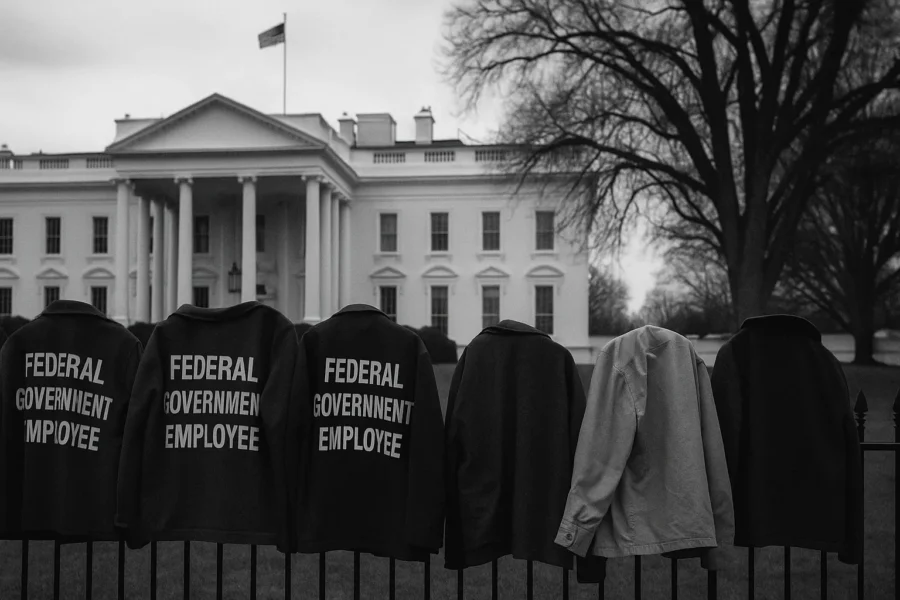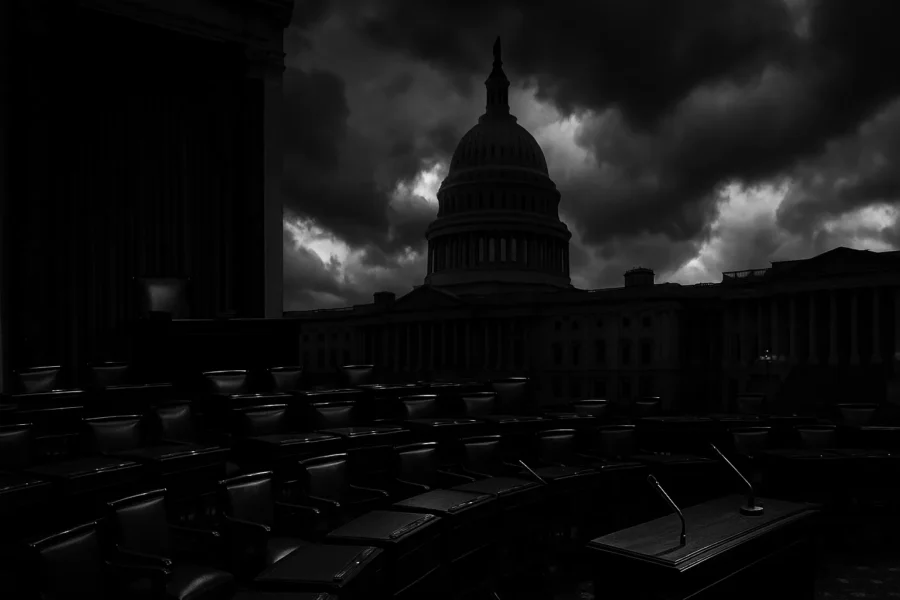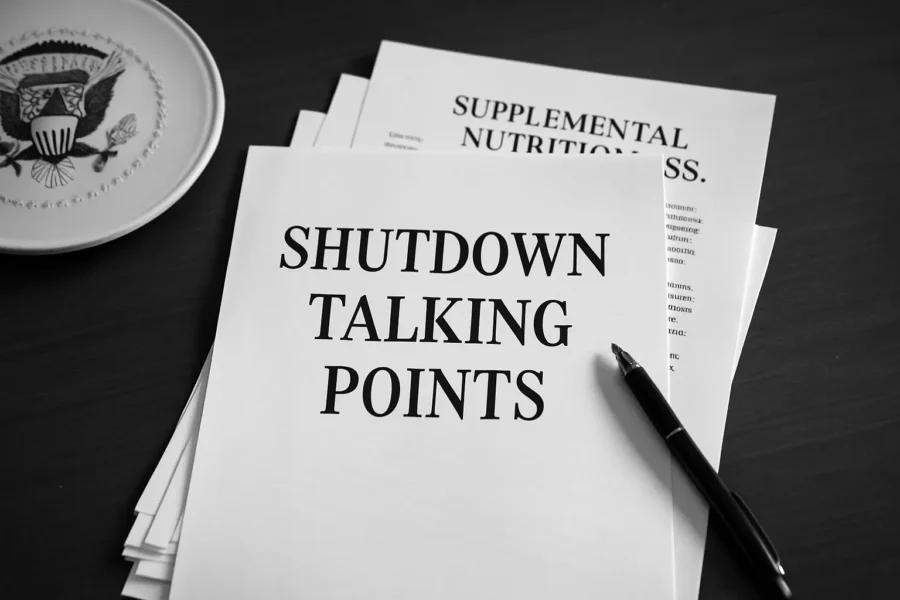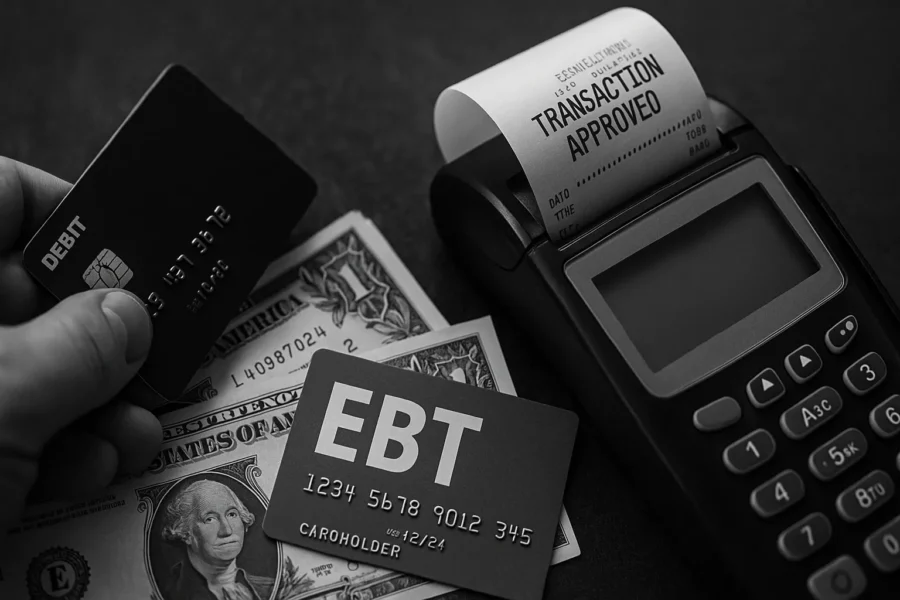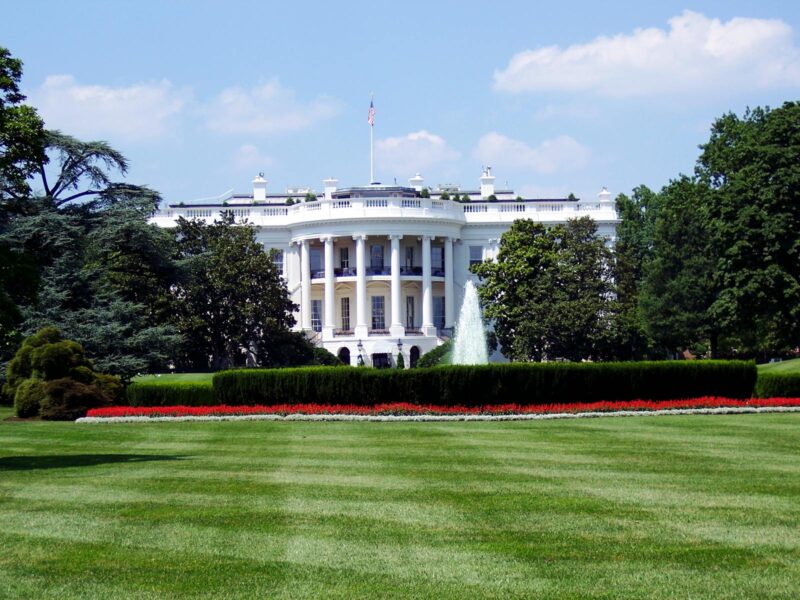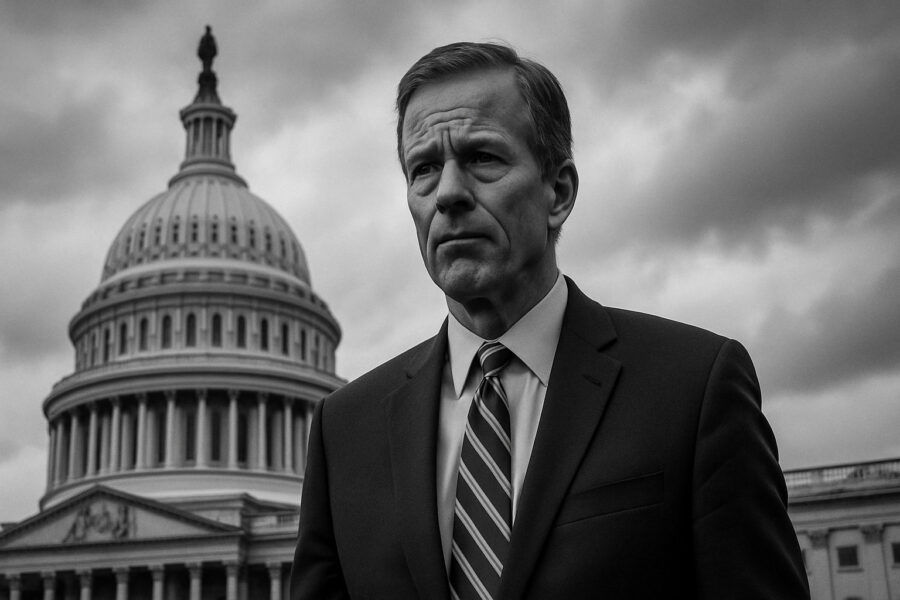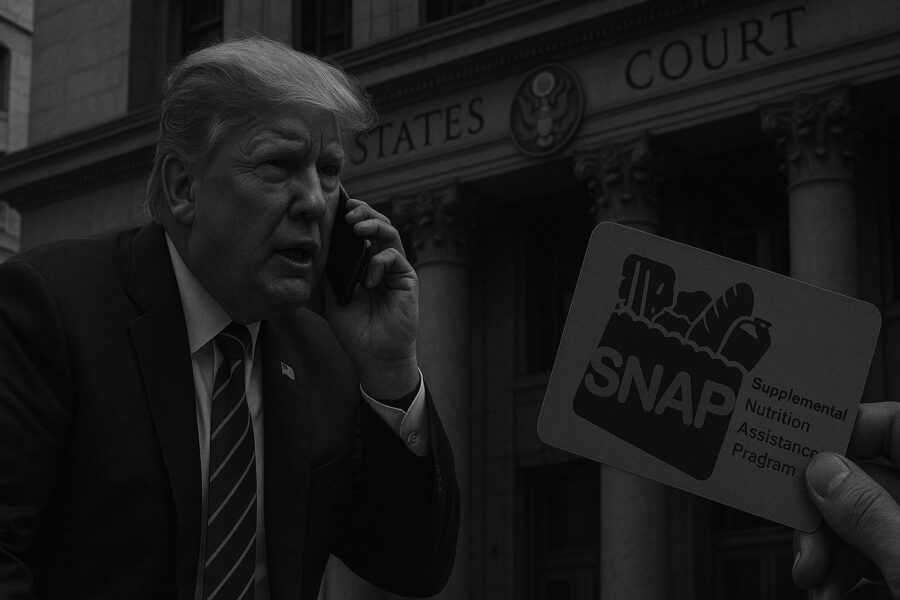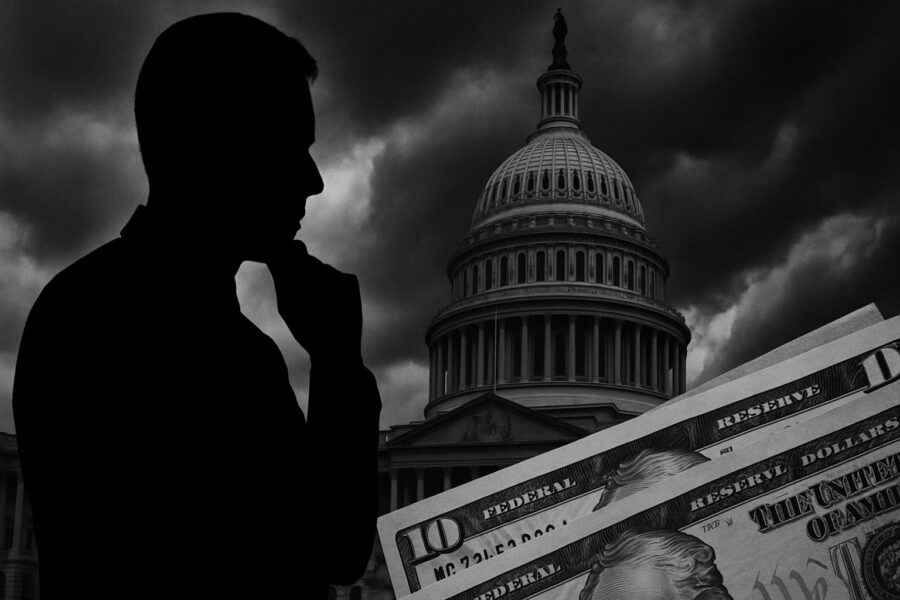Want Instant Updates? Follow us on Google News (here)
Want Instant Updates? Follow us on Google News (here)
U.S. Government Shutdown
Live Update: Loading duration…
Estimated Shutdown Cost
Based on CBO and OMB/Treasury productivity assumptions. Updated in real time. Figures are approximate and represent an educated estimate of direct fiscal losses.
Low Estimate
High Estimate
Live Cost Increase Since You Opened This Page
—
Elapsed since Oct 1 2025 (ET)
Methodology & Assumptions
- Furloughed federal employees (~800 k initial; 5.5 k recent layoffs)
- Paused or delayed services reducing economic activity
- Administrative friction in agencies lacking appropriations
Per-second rates derived from CBO weekly loss range ($1.5–$2.0 B / week):
| Step | Low | High |
|---|---|---|
| Per day (÷7) | $214.29 M | $285.71 M |
| Per second (÷86,400) | $2,480.32 | $3,307.07 |
total = base + rate × seconds_since_start
Direct costs only — excludes contractor ripple effects, macroeconomic drag, and confidence shocks.
Economic Impact & State’s Letters
View the Economic Impact of the Shutdown in Your State
Read Your State’s Letters of Support for a Clean CR
Have Your Say
The Back-and-Forth
Democrats voted to shut down the government over a dozen times. This is the Democrats' shutdown in every way.
— GOP (@GOP) November 1, 2025
WATCH: RNC Senior Advisor @daniellealvarez: "It is very simple; it takes 60 votes in the Senate to pass a budget." pic.twitter.com/xfLKcECUFW
Day 32 of the Democrat shutdown.
— GOP (@GOP) November 1, 2025
Families are struggling, Americans are missing paychecks, and Democrats don’t care. pic.twitter.com/BLgScL4dRn
Republicans in Congress were paid $43,500 over the last three months to do next to nothing. pic.twitter.com/0CDsLoI4u3
— Democrats (@TheDemocrats) November 2, 2025
The Trump administration went to court to try to get out of feeding 40 million Americans during this shutdown.
— Senate Democrats (@SenateDems) October 31, 2025
While Democrats are working to reopen the government and deal with the ticking time bomb on healthcare costs.
@ChrisVanHollen explains what is at stake: pic.twitter.com/SUUiUzQYz9
🚨 WATCH – DEMOCRAT FRAUD EXPOSED:@SenWarren previously decried government shutdowns as “hostage tactics.”
— House Republicans (@HouseGOP) October 31, 2025
Now, Elizabeth Warren and her Democrat colleagues are OPENLY using their government shutdown as “LEVERAGE.” pic.twitter.com/Y16MQMJMyI
— Senate Republicans (@SenateGOP) November 1, 2025
House Democrats are fighting to protect health care and SNAP.
— House Democrats (@HouseDemocrats) October 31, 2025
It’s time for House Republicans to get serious and work with us to reopen the government. pic.twitter.com/Z7eVOCxfRV
Trump and Republicans set aside $40 BILLION to bail out Argentina.
— House Democrats (@HouseDemocrats) October 31, 2025
But they can’t do the same to lower Americans’ costs and save health care? Shameful.
The Latest News & Updates
U.S. Government Shutdown — Fast Facts
Ongoing since October 1, 2025.
Dec 22, 2018 → Jan 25, 2019. This was the longest U.S. government shutdown in history.
Since the 1980 “Civiletti” opinions, which mandate shutdowns of non-essential services.
The CBO estimated the 35-day shutdown reduced GDP by $11B, with $3B permanently lost.
During the 2018-19 shutdown, about 800k federal employees were furloughed or worked without pay.
As of Nov 1, SNAP & WIC contingency funds are exhausted, and benefits are suspended indefinitely.
Longest Shutdowns (calendar days)
Notes: 2025 bar shows an ongoing duration (at least 31 days as of Nov 1, 2025). Durations are calendar days.
What counts as a “shutdown” vs. a brief “funding gap” depends on post-1980 legal guidance; many short gaps caused limited disruption.
2025 Shutdown Timeline
October 2025
Oct 1: Government Shuts Down
The 2026 fiscal year begins without a funding agreement. Congress fails to pass a continuing resolution (CR) after a stalemate over the GOP funding bill. Over 800,000 federal employees are furloughed.
Source: OPM.govOct 6: USDA Warns on SNAP/WIC
The USDA announces it has found emergency funds to cover SNAP (food stamp) benefits through the end of October, but warns that November benefits are not guaranteed and WIC funds will run out in days.
Related: SNAP Status ExplainedOct 10: Federal Courts Limit Operations
The U.S. Federal Courts announce they are operating on funds from filing fees but will run out by mid-November. They begin delaying all “non-essential” civil cases to conserve funds.
Source: uscourts.govOct 13: FIRST MISSED PAYCHECK
Approximately 800,000 furloughed and “excepted” federal employees miss their first paycheck. This includes TSA, Air Traffic Control, military, and law enforcement. Reports of applications to food banks and relief funds surge.
Oct 16: Airport Delays Begin
Major airports (LGA, EWR, DCA) report significant delays. The FAA and TSA unions cite an increase in “sick outs” from essential staff working without pay. See our Travel Alerts page.
Source: FAAOct 22: SNAP Lawsuit Filed
A coalition of states and public interest groups files a lawsuit, arguing the administration is required to release SNAP benefits under the law, regardless of the shutdown.
Related: News UpdateOct 28: SECOND MISSED PAYCHECK
Federal workers miss their second paycheck, marking one full month without income. Credit unions report a massive spike in applications for 0% APR furlough loans.
November 2025
Nov 1: SNAP & WIC Funding Lapses
Today. The one-month mark. The USDA’s emergency funds are exhausted. November SNAP and WIC benefits are officially suspended, creating an immediate food crisis for over 42 million Americans.
Related: Get Food & Financial HelpNov 3 (Future): House Vote Scheduled
House leadership has scheduled a vote on a “clean” continuing resolution (CR) that would fund the government temporarily. This vote will test whether a bipartisan majority can override the stalemate.
Related: The Democratic PositionNov 11 (Future): Third Missed Paycheck
If the shutdown is not resolved, federal workers will miss their third consecutive paycheck. Economists warn this could trigger a wave of defaults on mortgages and auto loans.
Related: Economic Impact AnalysisNov 15 (Future): Court Funding Crisis
The U.S. Federal Courts are projected to run out of their fee-based funding. This would force them to halt all non-essential civil cases, effectively crippling the federal justice system.
Source: uscourts.govNov 26 (Future): Thanksgiving Pressure
The day before Thanksgiving. This is seen as the next major political pressure point. If the shutdown is not resolved, Congress will face immense public anger for leaving for the holiday while workers are unpaid.
Frequently Asked Questions (2025 Shutdown)
Answers to the most common questions about the ongoing 2025 U.S. government shutdown, its impact on you, and the political process.
Benefit & Aid (SNAP, WIC, VA)
What is the status of SNAP/WIC benefits as of November 1, 2025?
As of Nov 1, 2025, federal funding for SNAP and WIC has lapsed. November benefits are suspended indefinitely because there are no remaining contingency funds. States do not have funds to cover the gap. Please see our resources page for local food banks.
Are Social Security and Medicare affected?
No. Social Security, Medicare, and Medicaid are “mandatory spending” programs funded separately from the annual appropriations bills. Checks will still go out and services will continue.
Will military and federal retiree benefits be suspended?
No. Like Social Security, military and federal retirement benefits are mandatory spending and are not subject to the annual appropriations shutdown. Retiree checks will continue to be paid on time.
Will I get my Child Tax Credit (CTC) payment?
The IRS is a non-essential agency and is mostly shut down. This means that while the CTC is law, the processing and issuing of payments may be severely delayed.
Will VA hospitals close or will I still get my VA benefits?
VA healthcare is considered essential and VA hospitals will remain open. Most other VA benefits, like disability compensation and pensions, were advance-funded and are not affected by the shutdown.
What about other benefits like TANF or housing assistance (Section 8)?
These programs are at high risk. HUD and HHS, which administer these programs, are shut down. While some funds may have been distributed before Oct 1, no new payments or administrative support is available. Contact your local public housing authority for status.
Are student loan payments still due during the shutdown?
Yes. The shutdown does not pause student loan obligations. If you are a furloughed worker, contact your loan servicer immediately to apply for an economic hardship deferment or forbearance.
Can I apply for student aid (FAFSA)?
The FAFSA website may be online, but the Department of Education is furloughed. This means there is no staff to process applications or answer questions, which will cause major delays for new student aid.
Federal Workers & Contractors
What’s the difference between “furloughed,” “excepted,” and “exempt” employees?
Furloughed (“non-essential”) employees are sent home and not allowed to work. Excepted (“essential”) employees must continue to work without pay (e.g., TSA, Border Patrol). Exempt employees are funded by a source other than annual appropriations (e.g., Post Office, Federal Reserve) and work as normal with pay.
How many federal workers are affected?
Over 800,000 federal employees are directly impacted. On top of that, millions of federal contractors and private-sector workers whose jobs depend on government services are also losing income.
Will federal employees get back pay?
Yes. Federal law (the Government Employee Fair Treatment Act of 2019) mandates that all furloughed and excepted federal employees receive back pay once the shutdown ends.
What about federal contractors? Will they get back pay?
No. This is a critical distinction. Federal contractors are not federal employees and are not guaranteed back pay. Their companies’ contracts are suspended (a “stop-work order”), and they are typically not compensated for the lost time.
Can furloughed *and* excepted federal workers get unemployment benefits?
Yes. Furloughed federal employees are generally eligible for unemployment benefits. “Excepted” employees who are forced to work without pay are also eligible in most states. However, all employees who receive back pay will be required to repay those unemployment benefits.
Can I take a loan or withdrawal from my Thrift Savings Plan (TSP)?
Furloughed employees can apply for a financial hardship withdrawal from their TSP. TSP loans are also still being processed. The TSP will not default your existing loan if you miss payments, as you will be placed in a non-pay status.
What happens to my health insurance (FEHB) during a furlough?
Your Federal Employees Health Benefits (FEHB) coverage continues even if you are not receiving a paycheck. Your share of the premiums will accumulate as a debt, which will then be deducted from your paychecks once you return to work.
What happens to my security clearance if I miss payments?
Your clearance remains active, but all new investigations and periodic reinvestigations are paused. The danger is that significant financial hardship (like defaulting on a loan or mortgage) *can* be used to question your clearance eligibility in the future. You must contact your lenders immediately.
What should I do about my mortgage, rent, or car payment?
Contact your mortgage lender, landlord, and auto loan provider immediately. Many banks and credit unions (like Navy Federal and PenFed) are offering furlough relief loans or payment deferrals. Do not wait until you miss a payment.
Can I get another job while I’m furloughed?
Yes, but you must still follow your agency’s rules on outside employment and ethics. You cannot work for any entity that has business with your agency or creates a conflict of interest. Check with your agency’s ethics official first.
Public Services (TSA, Mail, Parks)
Will my mail still be delivered?
Yes. The U.S. Postal Service (USPS) is a self-funded independent agency (funded by postage sales) and is not affected by the government shutdown. Mail delivery will continue as normal.
Will I get my tax refund from the IRS?
No. The IRS is almost entirely furloughed. While tax payments are still due, the processing of returns and the issuing of refunds are halted until the shutdown ends.
Can I get a new passport?
Yes, for the most part. Passport services are funded by application fees, not by Congress, so they remain open. However, a passport office located inside a furloughed federal building will be closed. Check your local office’s status before you go.
Are National Parks and Museums closed?
Yes. As of November 1, 2025, all National Park Service sites, visitor centers, and restrooms are closed. All Smithsonian museums and the National Zoo are also closed. Some parks with open-air roads may be accessible, but they are unstaffed and unsafe.
What about scientific research (NIH, NSF, NASA)?
All new research grants from agencies like the National Institutes of Health (NIH) and National Science Foundation (NSF) are stopped. Clinical trials may be delayed, and major research projects are paused, except for critical missions (like operating the space station).
Are military personnel affected?
Active-duty military personnel are “excepted” and must continue to work. Their pay is funded by the appropriations bill that is in dispute. Their pay is delayed until a funding bill is enacted.
Where can I find my agency’s official shutdown plan?
The White House Office of Management and Budget (OMB) maintains a public database of all federal agency contingency and shutdown plans. You can find them on the OMB’s website.
The Political Process
Why did the 2025 shutdown begin?
Congress could not agree on a funding package. The House passed a GOP-led bill that included spending cuts and border security “policy riders.” The Senate opposed these measures, and no compromise was reached by the Sept. 30 deadline.
What can the President do to end the shutdown?
Very little. The Constitution gives Congress the “power of the purse.” The President cannot spend money that Congress has not appropriated. The President’s main role is to negotiate with congressional leaders from both parties and to either sign or veto whatever funding bill they pass.
What is a “Continuing Resolution” (CR)?
A Continuing Resolution (or CR) is a temporary, short-term funding bill. It “continues” funding at current levels for a brief period (e.g., 30 or 45 days) to give Congress more time to negotiate a full-year budget and avoid a shutdown.
What is a “policy rider”?
A “policy rider” is a provision added to a “must-pass” bill (like a funding bill) that is on a completely different subject. In this shutdown, Republicans added border security policy changes to the funding bill. Democrats call these “poison pills” because they make the bill impossible for them to support.
What is a “policy rider”?
A “policy rider” is a provision added to a “must-pass” bill (like a funding bill) that is on a completely different subject. In this shutdown, Republicans added border security policy changes to the funding bill. Democrats call these “poison pills” because they make the bill impossible for them to support.
Why do Democrats oppose it?
They argue it cuts too deeply into healthcare, education, and green programs and includes partisan “policy riders” unrelated to essential funding. Read the Democratic position here.
What is the Senate filibuster and how does it matter?
The filibuster is a Senate rule that requires 60 votes (out of 100) to advance most legislation, rather than a simple 51-vote majority. This means that even if one party has a slim majority, they must get support from the other party to pass a funding bill, forcing a compromise.
How can citizens make their voices heard?
You can contact your House Representative and your two Senators to share your opinion. Informed, respectful communication with your elected officials is a core part of the democratic process.




